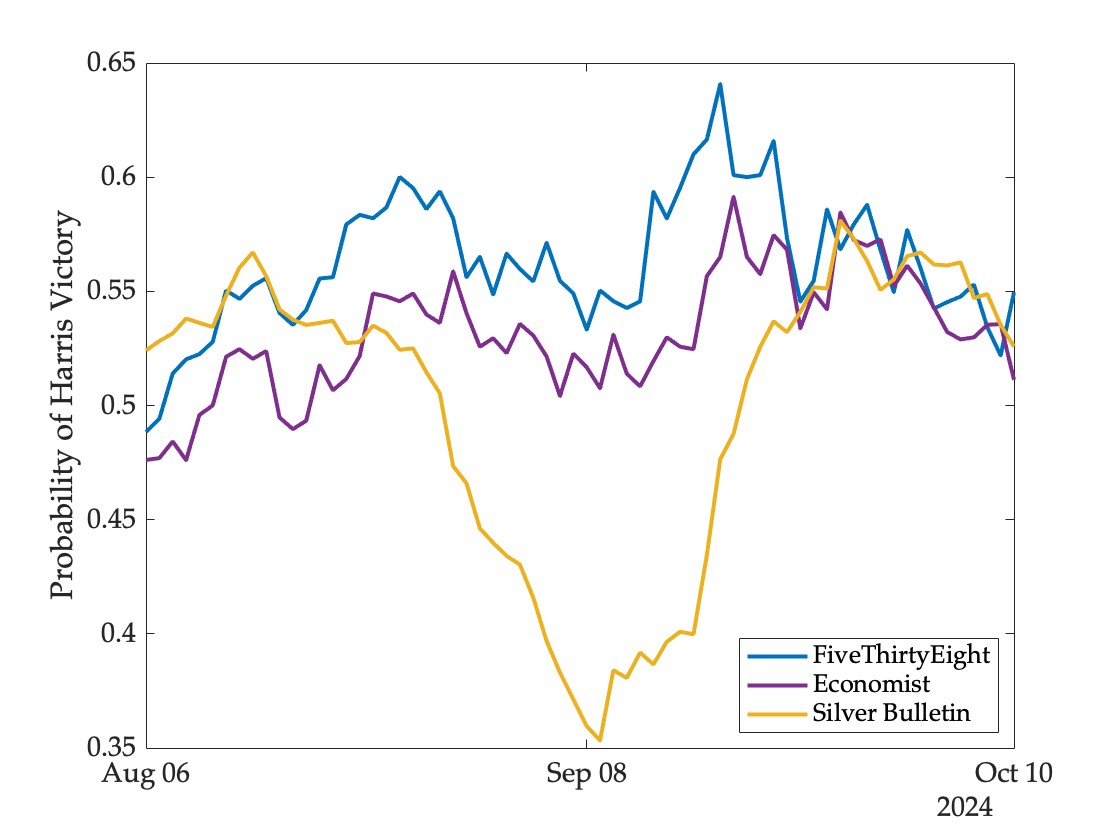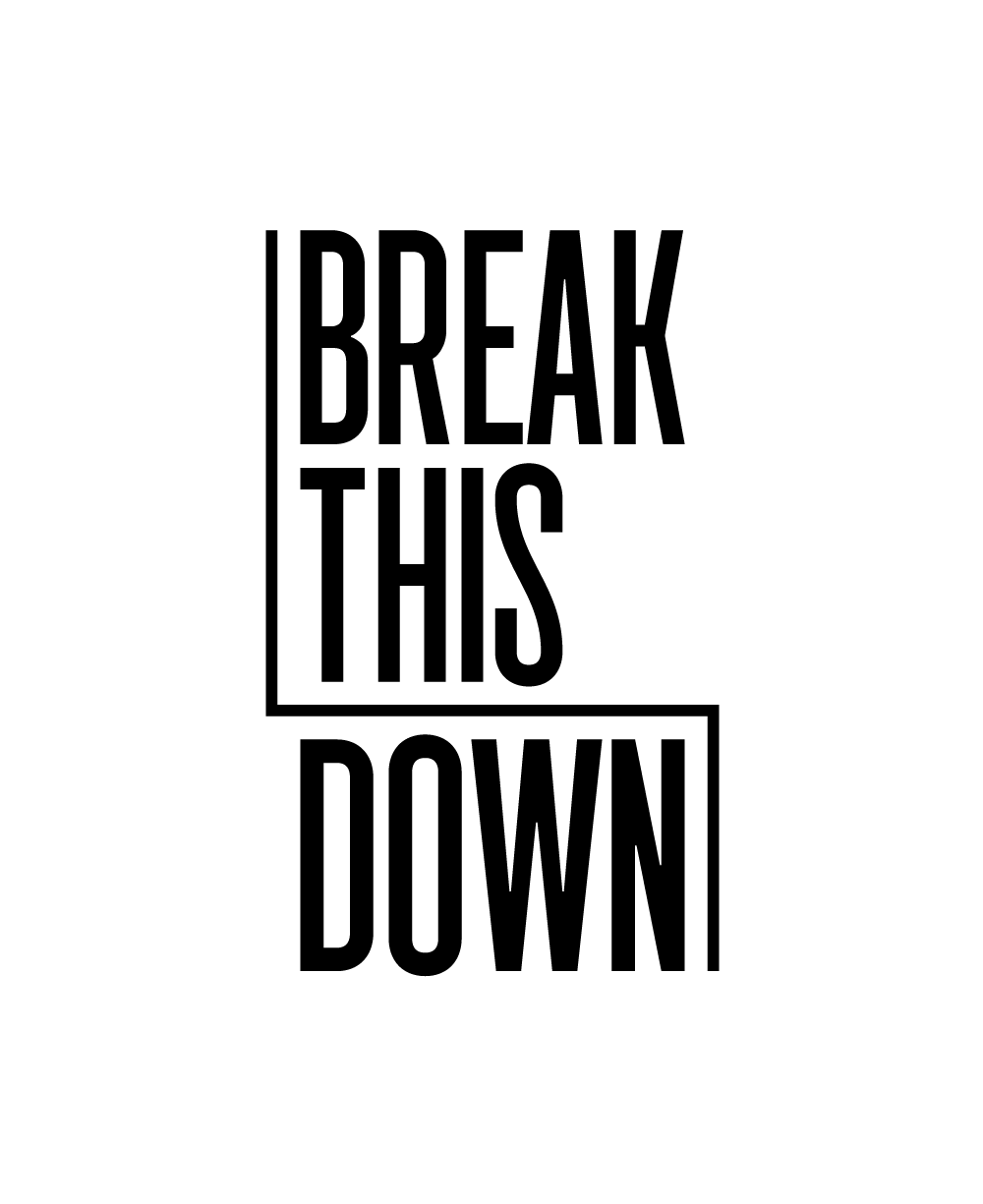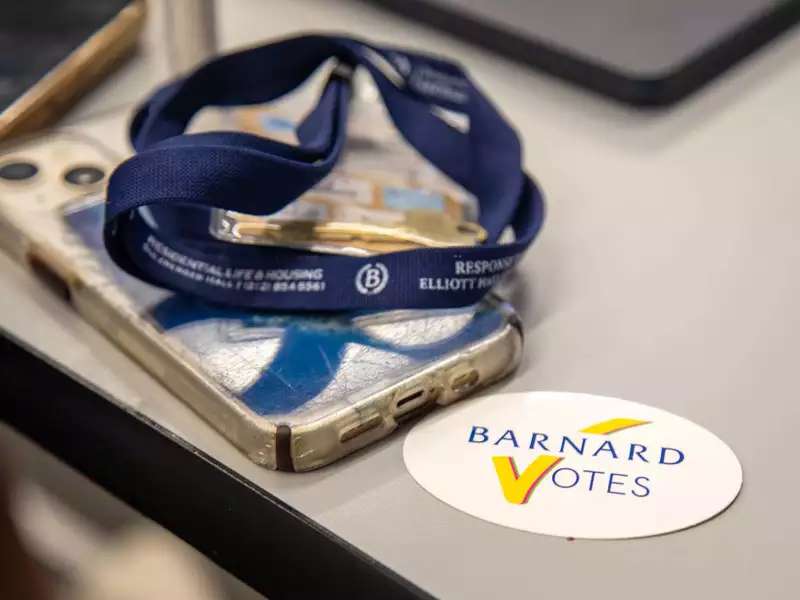Rajiv Sethi — Barnard College professor of economics and widely published economic researcher — is no stranger to applying the science of economics to consequential real-life situations. Much of his microeconomic research focuses on communication, stereotypes, segregation, and inequality. Currently an external professor at the Santa Fe Institute and a former Joy Foundation Fellow at the Radcliffe Institute for Advanced Study at Harvard University, Sethi teaches students how to use economic reasoning to draw informed conclusions about the world. He is also a director of Interactive Economics, a free, globally accessible online library of economic learning materials, underscoring his commitment to making knowledge more widely available.
Currently, Sethi has been focusing on information and beliefs — two areas that shape public discourse and drive decision-making. On October 23, Sethi led an engaging exploration of the complex world of prediction models and markets for U.S. presidential elections for alumnae, at a free Barnard|Next event. As the United States approaches November’s 2024 presidential election, understanding the constant stream of news and data has never been more important. In this politically polarized climate, Americans are eagerly anticipating Election Day and anxious about the outcome.
Sethi breaks down the science and tools the media is using to predict the election and offers his expert take on what statistical models and prediction markets can tell voters.
Why is it important to look at forecasting for the upcoming U.S. 2024 presidential election?
Some political scientists argue that voters should ignore forecasts completely and just operate under the assumption that the election will be close. But most people care deeply about the outcome of the election and are intensely curious about whether their preferred candidate will prevail. So websites that offer forecasts based on statistical models or prediction markets are seeing a lot of traffic and media attention. It’s important to assess the accuracy of these forecasts so that people know what is informative and what is just statistical noise.
For someone unfamiliar with prediction markets, could you explain how they work?
They are similar to other financial markets, in that they involve trading contracts on exchanges. The main difference is that the contracts have a very simple structure. There is a referenced event — for example, that Kamala Harris will win the state of Michigan — and those who hold the contract will be paid a dollar if the event occurs, and nothing otherwise. When someone buys such a contract, there is a counterparty making the opposite bet who will get paid a dollar if the event does not occur.
Suppose you buy the Harris-wins-Michigan contract for 60 cents. Then you pay the exchange this amount, while your counterparty pays 40 cents, and the exchange promises to transfer the dollar to whichever person gets it right. The price of the contract is often interpreted as a probability. In this example, people would say that according to the market, Harris has a 60% chance of winning Michigan. While each contract just pays just a dollar, people can buy and sell very large quantities, and a billion dollars has been staked on election outcomes already in this cycle.
What key factors or variables do you prioritize when analyzing election forecasts, and do they help measure the accuracy of models?
Conventional approaches to measuring accuracy compare predictions to realizations. If you predict [there’s a] 70% chance [of rain] tomorrow, and I say the chance of rain is 60%, your accuracy is greater if it rains and mine is greater if it does not. I have been developing an alternative approach that can be implemented even before event realization. The basic idea is that if you believe the prediction of a model and trade on a market based on this belief, you will lose money if the model predicts less well than the market and gain if it is better than the market. This allows us to evaluate and compare the accuracy of models and markets on a daily basis.
Which sources have you been closely monitoring and why?
I've been monitoring three statistical models (FiveThirtyEight, Silver Bulletin, and The Economist), and two markets (PredictIt and Polymarket). These are the most widely accessed sources during the current election cycle, and their predictions differ in interesting ways.







